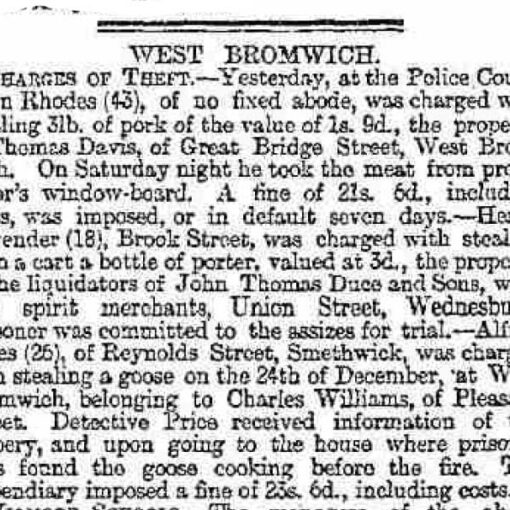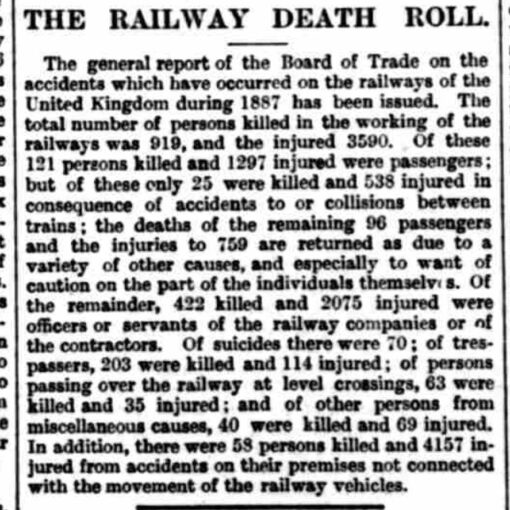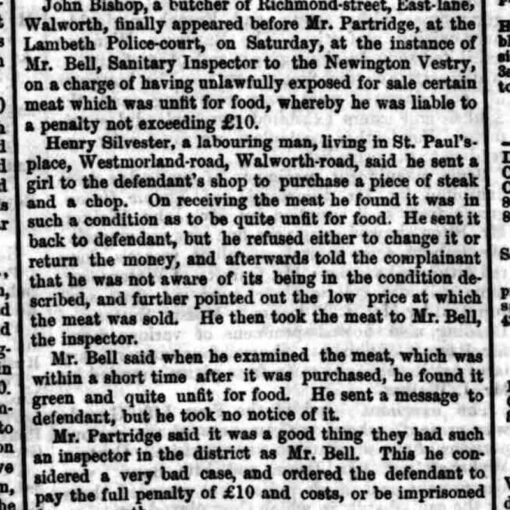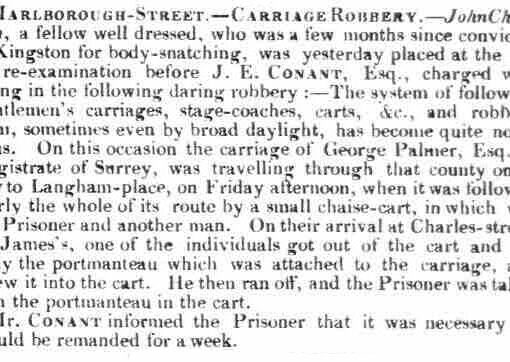Blackpool Times – Thursday 03 January 1901
Alleged Theft of a Diamond Ring.
Defendant Too Ill to Appear.

At the Preston General Quarter Sessions, held yesterday, the Chairman, Mr. Worsley-Taylor, Q.C., M.P., stated that the case against Richard Thompson Cubbin, who was charged with stealing a fur-lined overcoat from the Hotel Metropole, Blackpool; a diamond ring from Thomas Rea, jeweller, of Bolton Street, South Shore; and attempting to steal another diamond ring, the property of Richard Holt, jeweller, Bank Hey Street, Blackpool, would not be taken until the Intermediate Sessions on February 13th.
Mr. Hodgson said he appeared for the defendant, and he knew nothing about a remand.
The Chairman: I understand that he is too ill to appear.
Mr. Hodgson: Will the Court allow him out on bail when he gets better? If you do this, what amount will you fix as surety?
The Chairman, after reading the evidence, said they were not prepared to make an offer of any kind.
Analysis
- Historical Context:
- This article dates to January 1901, marking the end of the Victorian era and the beginning of the Edwardian era. Queen Victoria died that month, and the British Empire was at its zenith.
- Blackpool, as a popular seaside town, was experiencing growth as a resort destination, and the presence of establishments like the Hotel Metropole highlights its status as a hub for tourism and leisure.
- Legal Proceedings:
- The case was handled at the Preston General Quarter Sessions, a local court dealing with serious offenses not warranting trial at the Assizes. This reflects the structured legal framework of the time.
- The defendant, Richard Thompson Cubbin, faced multiple charges of theft, including high-value items like a diamond ring and a fur-lined coat, indicative of criminal activity targeting wealthier individuals or establishments.
- The refusal to grant bail, despite the defendant’s illness, suggests the gravity of the allegations or potential doubts about the defendant’s reliability to appear later.
- Life in Blackpool in 1901:
- Blackpool was evolving as a bustling Victorian holiday destination, with landmarks like Bank Hey Street and South Shore being prominent areas for commerce and leisure.
- Thefts involving luxury goods such as fur-lined coats and diamond rings signify a stratified society where wealth and ostentation were visible but also made individuals and businesses targets for crime.
- Victorian/Edwardian Era Legal and Social Insights:
- The detailed reporting of the case, including named individuals and addresses, demonstrates the transparency of legal processes and the role of newspapers in informing (and sometimes sensationalising) public opinion.
- Crime was often a reflection of broader societal issues such as poverty, inequality, and the transient population brought in by tourism and industrialization.
- Relevance for Historians and Genealogists:
- The names and locations provided (e.g., Richard Thompson Cubbin, Thomas Rea, Richard Holt) can aid genealogists in tracing family history or understanding the roles of specific individuals in historical Blackpool.
- For historians, this case offers insights into the judiciary, societal values, and day-to-day life in a prominent Edwardian seaside town.
- Social Commentary:
- The luxury items involved and the locations targeted suggest that Blackpool’s development brought a mix of affluence and challenges such as crime.
- The defendant’s illness and the court’s unwillingness to grant bail also hint at the stricter, less sympathetic stance of the legal system at the time.
The Blackpool Times: A Window into Victorian and Edwardian Life

Founded in 1877 as the Blackpool Times and Fylde Observer, this Liberal-leaning newspaper served readers across Blackpool, St. Anne’s-on-the-Sea, Poulton, Kirkham, and the surrounding agricultural districts of the Fylde. Acting as the local Blackpool edition of the Fleetwood Chronicle, the Blackpool Times spanned eight pages and offered a rich and diverse range of content, with lively, informative reports and engaging features.
The Blackpool Times excelled in covering local affairs, reporting on significant developments such as the Blackpool Improvement Bill, as well as the latest updates from the Blackpool Town Council and the Blackpool School Board. It also chronicled community events, including weddings and local corporation contracts, offering a valuable snapshot of daily life in Blackpool. Reflecting Blackpool’s status as one of the country’s leading seaside resorts, the paper advertised an array of amusements, featuring entertainment listings for the Winter Gardens, the Grand Theatre, and the Blackpool Tower.
By January 1901, the newspaper had established itself as a publication catering to a wide variety of interests. Readers could explore columns such as the ‘Latest in Science,’ ‘Bits from Books,’ and ‘Health and Home,’ the latter offering practical cookery tips, hints, and recipes. There was even a dedicated children’s section featuring stories, poetry, and puzzles, alongside a ‘London Letter,’ ‘Literary Notes and Notices,’ and ‘Personal Gossip.’
A highlight of the Blackpool Times was its use of illustrations, which added vibrancy to its ‘Events of the Week’ feature. With its blend of local news, cultural insights, and practical advice, the newspaper was a treasured resource for the Blackpool community and an enduring record of life during the late Victorian and early Edwardian eras.
Alleged Blackpool Diamond Heist: Defendant Too Ill for Court Appearance”#BlackpoolHistory #TrueCrime #EdwardianEra #VictorianCrime #CourtCases #LocalHistory




